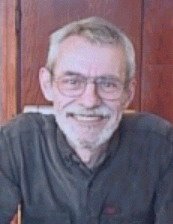
The Patriarch Teoctist was the most enduring head on the patriarchal throne (21 years) out of the 5 patriarchs Romania had since 1925 till now. In the history of the national Church, he is a record possessor too: 57 years of ceaseless episcopate.
The Patriarch Teoctist is a typically Romanian clergy profile, coming from a family of Moldavian peasants who dedicated one son to monasticism. The Patriarch Teoctist chose monastery life when 15 and he wore the "angel face" until passing to the everlasting life. His connection to the monastery endowed him with that feature specific to the imperial way: vigilant serenity and inner balance.
While an episcope-vicar in Bucharest for 12 years, after being educated at the school of Patriarch Justinian, the Patriarch Teoctist applied the evangelic rule "mild as doves, cautious like snakes" as the beginning of his service to the Church coincided with the arrival of Communism. At that rough times when priests and monks would be thrown behind bars, Church officials had to mime adaptation to the regime. But what they actually did was fight for the survival of the Church deeply rooted in the being of the Romanian people. The caution of the post-war Romanian patriarchs, of patriarch Justianian and the patriarch Teoctist in particular, proved lucid and realistic and this is one reason to mention an imperial way.
The Patriarch Teoctist was a bridge between two difficult epochs. He was annointed in November 16, 1986 and he guarded the National Church for 3 years, under the Communist regime. At times of strong atheism, in the autumn of 1989, when returning from India, the Patriarch Teoctist had the idea to pay a visit to Pope John Paul II, which drove Communist authorities and the Romanian ambassador in Rome crazy. I myself could hear the Patriarch recounting the episode in Caldarusani Monastery in the early December of 1989. The patriarch was aware that Ceausescu would fall. Under the regime following after December 22, 1989, the Patriarch Teoctist proved his skill in not keeping the throne at all costs: in January 18, 1990, he stepped back. But just a few months later, in April, the Church asked him to come back, which he did.
As for the post-communist agitation, the Patriarch and the Synod had to face overwhelming challenges: sect proselytism, strong Catholic pressure and political temptations. Teoctist was no party's man and no politician. He was a clergyman and remained so. The Patriarch and the Synod flattered popular piety by canonizing numerous Romanian saints. They also established lots of monasteries and cloisters and paid attention to theological education.
The Patriarch Teoctist was receptive to the present. He developed the connections with the other Orthodox Churches, he established hundreds of parishes in the Diaspora, he cultivated ecumenical and interreligious dialogue. The Ecumenical Patriarch visited our country about 10 times in the last 17 years and Pope John Paul II could see his dream of brotherly visiting a National Orthodox Church come true due to the Patriarch Teoctist, who strongly opposed the idea that certain politicians should get the laurels. President George W. Bush, the most powerful man on the planet, bowed to him when visiting Romania.
When enshrined on the patriarchal throne, the Patriarch Teoctist confronted reticence. But he is now leaving the world triumphantly. Due to help from the Synod and the faithful, he left a flourishing Church, maybe the most flourishing one among the Orthodox Churches. May God rest him together with the just ones !
Dan Ciachir
Ziua Marti 31 Iulie 2007 http://www.ziua.net/english





.jpg)


















1 comment:
Photos with Patriach Teoctist in Cathedral are at www.fotoblog.ro . More news will come!
Post a Comment